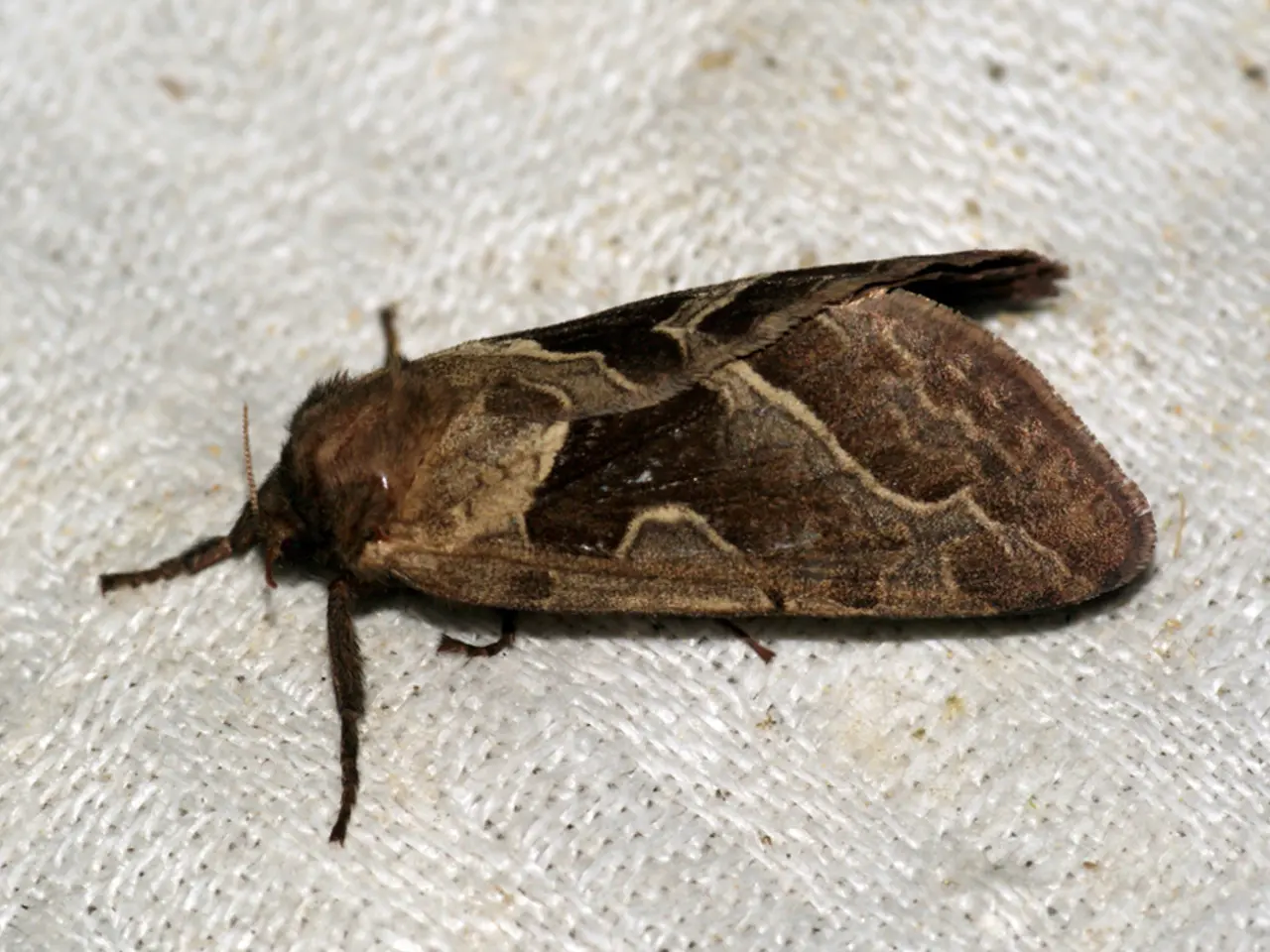Soaring number of Lyme disease and TBE cases during summer break - Summertime brings an increase in cases of Lyme disease (borreliosis) and Tick-Borne Encephalitis (FSME) during holiday seasons.
Rising Lyme Disease and Tick-Borne Encephalitis (TBE) Cases in Thuringia During Summer Holidays
During the summer holidays in Thuringia, Germany, a significant increase in cases of Lyme disease and Tick-borne encephalitis (TBE) has been reported. According to data from the health insurance company Barmer, a total of 282 Lyme disease infections have been reported so far this year, with approximately half of these cases occurring during the summer holidays.
The trend of these diseases occurring during the summer holidays is noteworthy, as it is linked to increased outdoor exposure to ticks in endemic areas, such as forests and grassy spaces common in Thuringia. The city of Erfurt, located in Thuringia, has also seen five cases of TBE during the summer holidays.
Lyme borreliosis, the most common tick-borne infection in Germany, is caused by certain bacteria (borrelia) transmitted from ticks that typically feed for more than 12-24 hours. Symptoms include an expanding bull’s-eye rash and flu-like signs, and it is treatable with antibiotics but requires early detection. TBE, on the other hand, is a viral infection with more serious consequences, and prevention includes avoiding tick bites and considering vaccination where recommended.
In the entire year of 2024, a total of 399 Lyme disease and 13 TBE infections were recorded in Thuringia, according to the Berlin Robert Koch Institute (RKI). The number of TBE infections reported in Thuringia since the beginning of the year until the end of the holidays is ten. In the past six holiday weeks, 142 cases of Lyme disease transmitted by infected ticks were recorded in Thuringia.
To find more information on these high numbers of Lyme disease and TBE cases, it is recommended to review official German health websites and local Thuringian health authorities that provide surveillance reports and statistical data on these diseases. Additionally, consulting comprehensive tick safety guides and expert resources, such as the "Ultimate German Tick Safety Guide," can provide valuable insights into the nature of these infections, risk factors, symptoms, and prevention measures specific to Germany.
It is important to note that there is a protective vaccine against TBE, and understanding the symptoms of both Lyme disease and TBE can aid in early detection and treatment. A typical sign of Lyme disease is a red skin rash around the bite site, while symptoms of TBE range from flu-like illness to inflammation of the brain, spinal cord, and meninges.
By staying informed and taking the necessary precautions, such as checking for ticks after spending time outdoors and using insect repellent, individuals can help reduce their risk of contracting these diseases during the summer holidays and throughout the year. For the most up-to-date and region-specific data, it is advisable to check recent local epidemiological bulletins or research studies from German public health institutes.
- The rise in Lyme disease and Tick-borne encephalitis (TBE) cases during summer holidays in Thuringia necessitates a closer look at community policy regarding health and environmental concerns.
- Science plays a crucial role in understanding the causative agents and transmission cycles of these diseases.
- Sleep patterns can be affected by chronic diseases, including Lyme disease and TBE, as they progress and interfere with overall health.
- Workplace-wellness programs can incorporate education on medical conditions associated with Lyme disease and TBE to promote a healthier work environment.
- The increase in Lyme disease cases during summer holidays calls for stricter regulations and enforcement of health policies to protect the public.
- Cancers, respiratory conditions, and digestive health can be complicated by untreated Lyme disease or TBE, making early detection vital.
- Eye-health, hearing, and skin-conditions can also be affected by these diseases, highlighting the need for comprehensive health policy and coverage.
- In the context of health policy, the prevention and management of Lyme disease and TBE require cooperation between the healthcare industry, Medicare, and financing partners.
- The use of CBD, a popular cannabis derivative, may have potential therapeutic benefits in managing the symptoms of neurological disorders related to Lyme disease and TBE.
- Climate change can impact the distribution and activity of ticks associated with Lyme disease and TBE, necessitating constant monitoring and adaptation in health policy.
- Manufacturing and other industries must take responsibility for implementing safety measures to limit exposure to tick-infested areas during production processes.
- Mental-health resources should be made available for those diagnosed with Lyme disease or TBE, as the psychological impact of these diseases can be significant.
- Men's health organizations ought to address the gender differences in disease presentation and treatment needs for Lyme disease and TBE.
- Skin-care products and practices can help individuals protect themselves against tick bites, reducing the risk of infection during outdoor activities.
- Therapies and treatments for Lyme disease and TBE should be evidence-based, relying on environmental-science to guide the development of effective interventions.
- Nutrition plays a role in the immune system's ability to fight off infections like Lyme disease and TBE, emphasizing the importance of nutrition in health policy and wellness.
- Aging, particularly in the elderly population, may increase vulnerability to the complications of Lyme disease and TBE, requiring targeted approaches in health policy.
- Women's health concerns, including pregnancy and breastfeeding, should be considered when developing health policy recommendations for diagnosing and treating Lyme disease and TBE.
- Parenting resources should include education on Lyme disease and TBE prevention to safeguard children during outdoor activities.
- Weight-management programs can encourage healthy lifestyles that minimize the risk of Lyme disease transmission through reduced outdoor exposure.
- Cardiovascular-health is linked to the immune response to Lyme disease and TBE, highlighting the need for cardiovascular health policies in managing these diseases.
- Industry leaders must prioritize workplace-wellness to address the impact of Lyme disease and TBE on employee health and productivity.
- Medicare policies should cover the diagnosis, treatment, and prevention of Lyme disease and TBE, ensuring access for all affected individuals.
- The aerospace industry can contribute to scientific research on the environmental factors influencing Lyme disease and TBE transmission.
- Retail companies ought to partner with environmental organizations to promote eco-friendly solutions for tick and mosquito control.
- Public-transit systems can implement educational campaigns to inform passengers about tick safety and potential disease risks in endemic areas.
- Entrepreneurship can foster innovation in the development of products and services to combat Lyme disease and TBE at a local and global scale.
- Collaboration between governments, healthcare providers, and the private sector is essential for addressing the rising cases of Lyme disease and Tick-borne encephalitis and ensuring the health and wellbeing of all communities.








